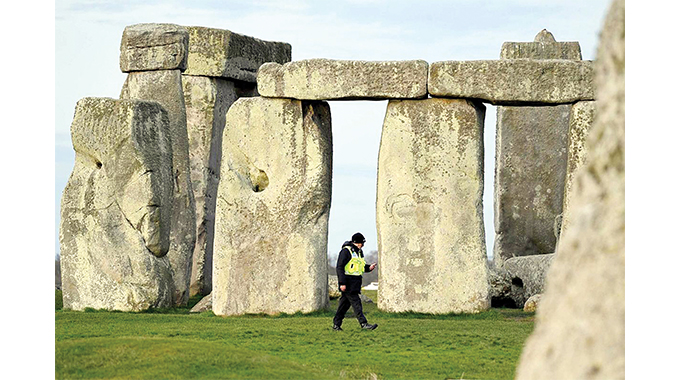
The Sunday News

LARGELY, humans act, as they believe. It is therefore possible to figure out resident worldview, thought, cosmology, ideas and beliefs of creators and builders of a given built environment.
This reality includes the designs and embellishment of the household artifacts that they produce. Design and embellishment carry the same message, that of the community of crafters.
There is thus overall, the same expressions, representations and symbolisation. There is overarching congruence of the ordering ideas which inform, direct, condition and underpin creativity and hence the subsequent stages of production.
When ideas change, the change is identifiable and traceable at the material level, for example in the changing designs of old material objects and the emergence of new ones.
This is the important link between the intangible (ideas and beliefs) and the tangible (material and physical) items.
Endogenous change may be responsible for the changes. This is change emanating from within the community. That kind of change may be slow.
Sometimes the changes may be the result of ideas that come from a people who have a different worldview.
That type of change may be far reaching and creates some complex matrix that exhibits fluid relationships between the two sources of ideas. Another case, is when there is conquest of a community by another community that has a different culture from that of the conquered.
Here the defeated group more of less abandons its own culture and progressively assumes the which is perceived as superior by virtue of conquest. Here is a case of relationships of dominance and hegemony.
When archaeologists carry out their professional work of excavating an ancient site, the finds that they extract represent ideas held by the people who created, built and used the site.
There comes a serious challenge when the worldview of the creators and builders of the site differs from that of a later generation to which the archaeologists belong.
The result may be misinterpretation of the finds that were designed and crafted by earlier people such as the ancients who held a different worldview.
In almost all cases, the contemporary researchers believe they belong to a more advanced life/civilisation than earlier generations. Resident beliefs of the ancients as represented in the finds are often rubbished and regarded as primitive and deficient in scientific grounding.
Today we look at one such find that has been perceived and interpreted in ways that may differ from those of the ancients who created and designed the enigmatic find. We are focusing on the work done by the River Valley Project led by Mike Parker Pearson.
Which undertook research on the Stonehenge Cultural Site and the related Durrington Walls where the finds were unearthed.
It looks like the researchers had different ideas from those of ancient creators, builders and users of the finds were inadvertently visited with fun and sometimes derision.
In such a situation, the researchers’ views hold sway and the result is skewed in favour of current thought at the expense of thought applicable to the community of creators, builders and users.
Before venturing to the finds, it may be pertinent to give some brief background to the geological processes that were at work, and produced the type of rock that was used to craft the finds.
A long time ago, it appears there was some tropical sea where the process of deposition resulted in the accumulation of material, mostly silica, from some flint and limestone were the resulting geological formations and the finds were crafted out of these.
Various shapes resulted out of the formations: flat or tubular, nodular, small spheres and elongated knobs. These constituted some natural representations of sexual organs, some of which resembled the sexual organs.
At the same time, there were finds that clearly seemed to bear the hand of man. They were, without doubt, consciously crafted to represent ideas that were current then.
From the Durrington Walls, a natural nodule was retrieved whose glans was formed by a fossil shell with a worked groove.

The find invoked in the minds of the researchers ideas relating to sexual orhans, but less in terms of clarity regarding the meaning behind the representations of the sexual organs. The finds were phallic objects, male alone, male and female (hermaphroditic) and female alone.
The phallic object with representations of testicles was crafted out of chalk. Human agency was not excluded. The rare find constituted a phallus and two testicle-looking objects. Human agency could not be excluded.
For what purposes were these phallic and related sexual representations made at the Stonehenge and neighbouring cultural and natural landscape?
From the Somerset Levels was retrieved a wooden figurine which was preserved in bog where deterioration was minimal. This particular one portrayed a hermaphroditic individual (incukubili in IsiNdebele).
Elsewhere a flint was uncovered with a hole through its centre. Researchers referred to it as “pelvis flint.” This was presumed to be a female representation of sexuality. The abundance of phallic objects (male) was probably in line with the masculine and patriarchal nature of the community.
There is also the idea of axiology where there are attendant taboos that relate to the unbridled representation of female sex organs. Rock art by the san will depict erect penises but no accompanying female counterparts. This is indeed in line with African ideas regarding axiology.
During the times of the Romans, phallic objects were provided with wings and considered as symbols of luck and fertility. In summary, the finds revealed the presence of phallic objects and other related sexual manifestations such as the vulva.
What now remains is an attempt at interpreting these objects. As done before we shall lean on African ideas, as these are still current. There are instances when phallic objects are used and even where there are no material objects the ideas of sexuality are pervasive. It is to the possible interpretations that we turn in the next article.



